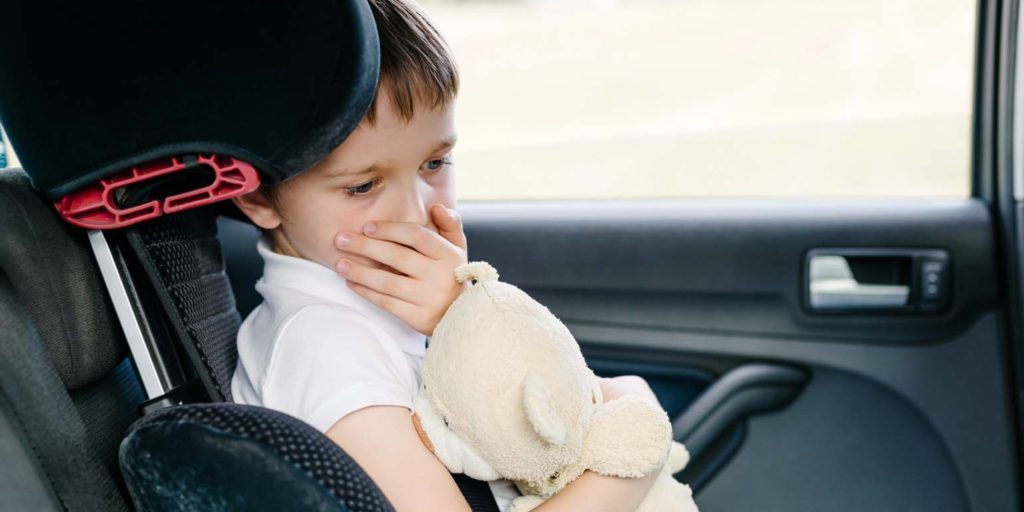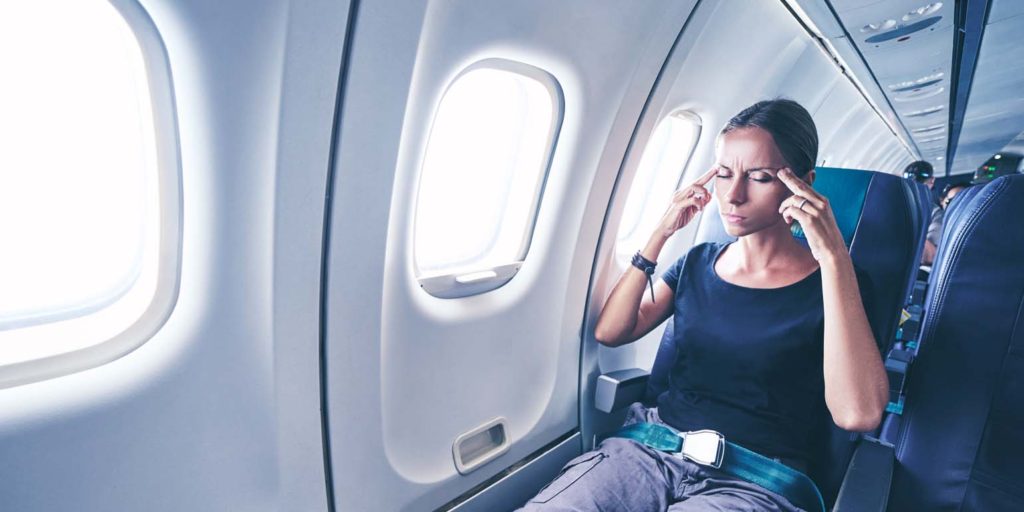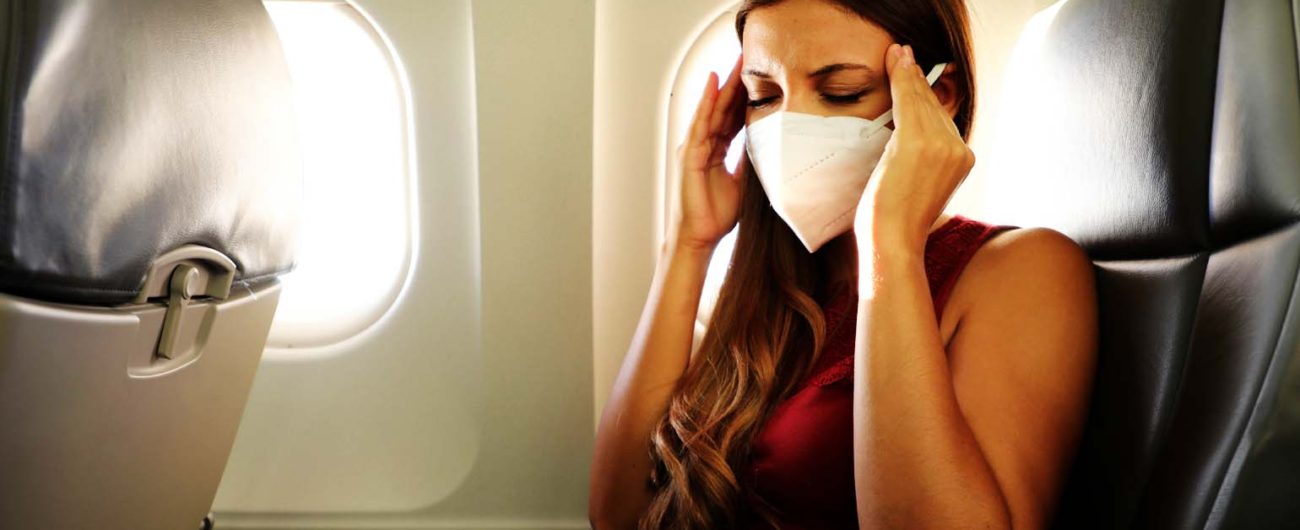We all love to travel, it’s fun to travel. But for some of us, straying away from our usual eating and sleeping habits can make it more likely for someone to get travel sickness. Your body will take time to adjust to the environment, food, water, and other elements when traveling.
The fancy word for travel sickness is “Kinetosis” but it’s the same as car sickness, plane sickness and seasickness. It happens when the body feels sick in reaction to being moved about.
There is no exact reason why one would get sick when traveling.
What can we do to avoid travel sickness?
You might be thinking that motion or travel sickness occurs only in kids. But have you wondered if can you develop motion sickness as you get older? The shortest answer to that is, YES! Age is not a factor here; it can happen to anyone.
What happens when you get travel sickness is that the vestibular system detects movement and sends a signal to your brain that you’re on the move and it reacts by making you feel sick, resulting in feeling uneasy, vomiting or even having tummy trouble.
In reality, there are things you could do to reduce the feeling of motion sickness. Sometimes it’s easier said than done but early planning and smart thinking can help keep you from feeling sick while traveling.
First things first, let’s find out the symptoms of travel sickness.
The worse part of travel sickness is that it can take you by surprise. You may feel good and chirpy one moment and then the next minute you could experience these symptoms:
- Increased saliva, nausea and vomiting.
- Cold sweats.
- Drowsiness.
- Fatigue.
- Headache.
- Irritability.
- Inability to concentrate.
- Pale skin.
- Rapid breathing or gulping for air.
Things you should know about car sickness in kids and how to avoid It

If you’re susceptible to motion sickness in a car, you can try out these things to prevent nausea.
Let your kid sit in the front seat – The front seat usually experiences less vibration than the back seat.
- Elevate – Elevate your car seat so that kids can look out the window. (This can help them distract their minds instead of becoming carsick).
Fact – Experts believe that older or taller kids experience less motion sickness than smaller kids because they can see out the window.
- Place the kids in a different seat – If you have a kid prone to car sickness place him/her in the middle of the back seat. Motivate them to look out the front window instead of the side windows.
- Don’t let your kids focus on anything still or read – Switch on the radio or strike up a conversation to keep their minds off how they’re feeling. Don’t allow them to read or stare at a screen, just distract them or make them look out the window.
- Let in some fresh air – Crack open the window and let some fresh, cool air circulate in the vehicle.
- Take some snacks on your journey – Let your kid much on some snacks as hunger aggravates car sickness (but don’t let them fill themselves up too much).
- Stop for a while – If your child starts to get travel sickness, stop the vehicle and let them walk around or stretch out a bit. In addition, making them lie down with their eyes closed for some time can also help.
- Drink water or a carbonated beverage – Sip on some cold water or a carbonated drink, like seltzer or ginger ale, can also curb nausea.
Good to know – Don’t take caffeinated beverages, like coffee and sodas, which may lead you to dehydration and make nausea worse.
- Try OTC travel sickness pills – There is a range of over-the-counter and prescription medications that are safe for kids. The most widely used OTC medications that are available include:
- Dimenhydrinate
- Diphenhydramine
- Prescription Medications – If your child’s travel sickness symptoms are extreme, you might want to consult a doctor to get some prescription medication. Some of the commonly prescribed medications include:
- Ondansetron
- Scopolamine
- Metoclopramide
These medications are only available by prescription and may not be appropriate for younger children. If your child’s motion sickness symptoms are severe or last longer than a few hours after you have arrived at your destination, contact your doctor.
Natural remedies

If you prefer a more natural remedy instead of OTC or prescription pills, these are some natural remedies for travel sickness.
- Ginger – Ginger works well when it comes to slowing down car sickness. There is no recommended dosage of ginger, however, the University of Maryland Medical Center suggests that the adult dose is 250 milligrams for grownups, which means kids will require less.
- Acupressure – This medical procedure is an alternative one like acupuncture. Consider wearing an acupressure wristband which is a low-risk and cheap treatment for car sickness.
- Aromatherapy – For nausea and motion sickness, you can try aromatherapy. Dab some essential oil on a small piece of tissue or put it inside an inhaler. Some fragrances that can help in this are lavender, spearmint, or peppermint. Other options are ginger, cinnamon and cardamom.
Recipes to Try
The following homemade recipes are also recommended for car travel sickness.
- The ingredients – 1 drop each of basil and peppermint plus one drop or two teaspoons of Lavender carrier oil. Mix the two ingredients in the carrier oil. Rub the hands to make the oil warm. Massage over the stomach gently or inhale for several seconds.
- The ingredients – 10 drops each of ginger, peppermint, and Roman chamomile. Combine the essential oils in a clear amber bottle. Breathe a few drops from an inhaler 30 to 60 minutes before traveling and every 15 minutes while on the road.
PLEASE NOTE – Like many other medications both of these medications may occur side effects, including drowsiness, so don’t be surprised if your kid arrives at your destination feeling dazed. However, it is highly advisable to check with your doctor before giving any new medication to your child.
All of the above tips may also be used as a preventative measure to avoid travel sickness. If you learn that even one of these solutions relieves your child’s symptoms, consider orienting it before leaving on your trip, and maybe you could avoid them from motion sickness.
Preventing airplane motion sickness naturally

These are some things you can do naturally without any medication.
- Select a seat over the wings – The plane’s center of gravity is less liable to vibration.
- Choose a window seat
- Relax – Listen to some calming music and try to chill out. Try to get the idea of getting travel sickness.
- Stay seated – Walking around may cause your body to have even more motion.
- Eat well – Eat well but avoid the oily food before boarding. Take something light but eat your fill. And don’t forget to take some snacks or crackers along with you as hunger makes air sickness worse.
Unfortunately, when airsickness strikes, you’re stuck on the plane and have no place to go but to stay in your seat. However, planes have air sickness bags.
Well, there you go that was my list of Travel sickness remedies that’ll make your trips easier. So, don’t have any setbacks on travel, just try out these solutions and have an awesome trip like you have ever before! And if you want to plan an amazing getaway, we at Travel Centre US will be more than happy to point you in the proper direction.




